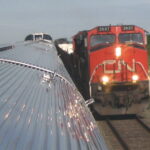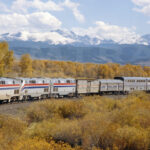How to Cope with Trains Running Late
I’ve been told — and I believe it — that the question most frequently asked by Amtrak passengers is “Why are we stopped?”
Veteran rail travelers know that Amtrak trains often run late. Sometimes very late. That’s especially true for long-distance trains because they operate on track owned and controlled by the freight railroads. Those dispatchers frequently move Amtrak onto sidings, giving priority to their freight trains. Amtrak trains also lose time because they are often forced to follow slow, lumbering freights.
So here’s the Cardinal Rule when booking a rail itinerary on Amtrak: Allow plenty of time when making connections. In fact, I almost always arrange to stay overnight and catch the next day’s train.
If you find yourself a passenger on a train that’s running late, here’s my very best advice: Relax and enjoy the ride!
Some years back, I was on the Empire Builder en route from Chicago to Seattle. Halfway through the second day, I was enjoying a leisurely lunch in the dining car somewhere in Montana. My tablemate happened to be an English gentleman who was very much enjoying his tour of the US on Amtrak. As we were chatting, the conductor came through the car and stopped briefly at our table. He told us we would be reducing speed off and on for the rest of the day because BNSF (Burlington Northern Santa Fe) was doing a lot of track work up ahead. He apologized, saying we would likely be three or four hours late arriving in Seattle. The Brit positively beamed. “Jolly good!” he said. “Then we really are getting our money’s worth, aren’t we!”



